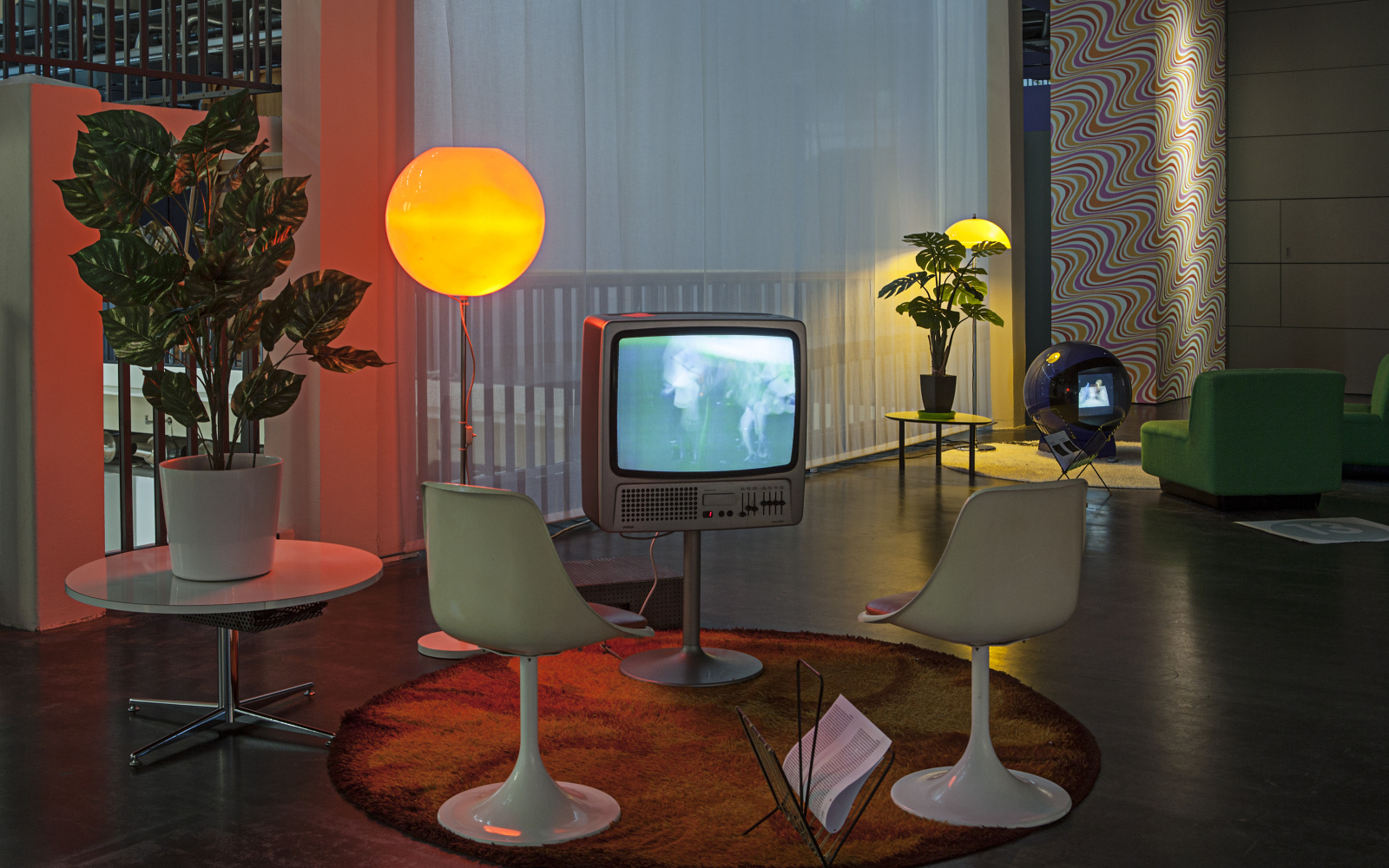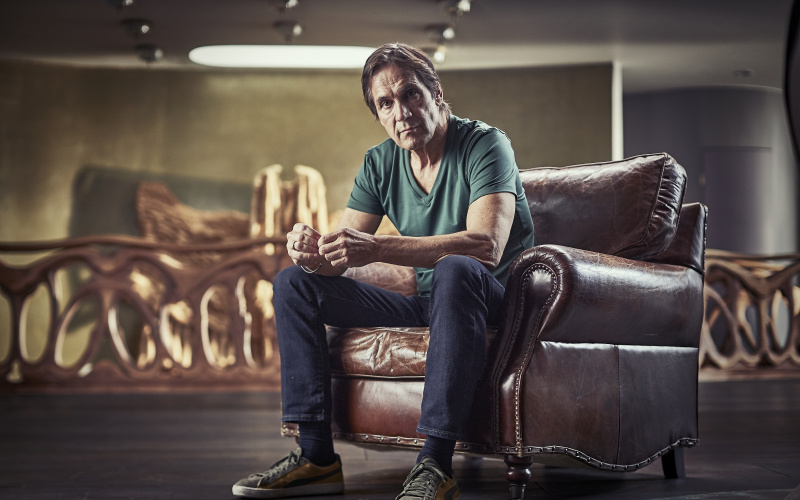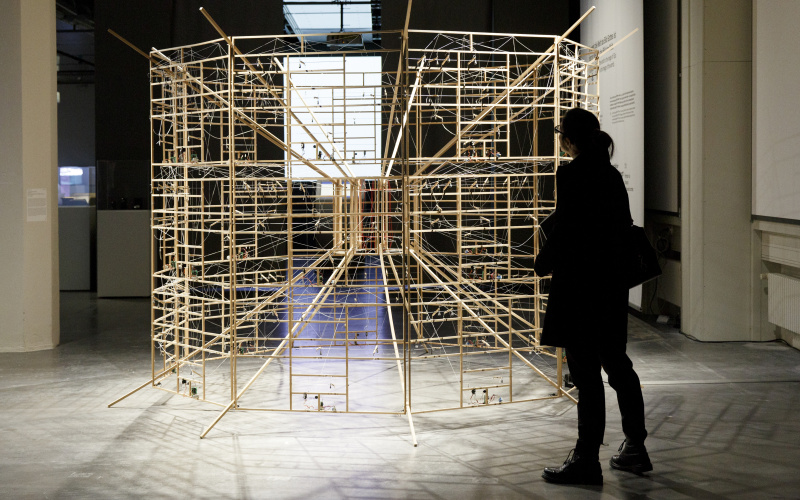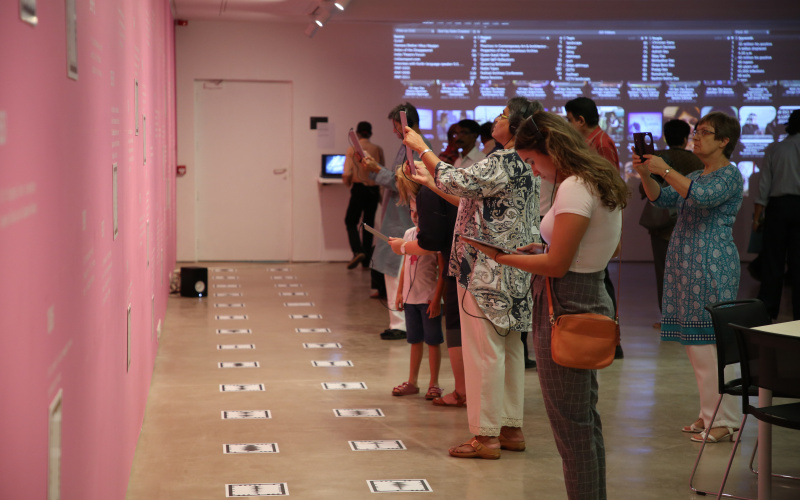On the exhibition »Vidéo Vintage«
These lines were written on site at the exhibition itself. If you will allow me to describe this visit, you will know why. Hardly an exhibition has done more to invite its visitors to linger in such a charming and – in the truest sense of the word – comfortable way.
BY STEPHANIE SYRING
I’m speaking about “Vidéo Vintage 1963 - 1983. A Selection of the Founding Videos from the Centre Pompidou Paris Collection.” This exhibition not only gathers together the most popular video works from the founding phase of the artistic medium of video, but it also presents them in their original conditions. Comfortably seated on vintage furniture, viewers can watch the videos on early, original televisions. Thus, each video, single works or small groups, can be experienced within an individually equipped island, consisting of a television set on a table and seating arranged around it. The television and furniture are adapted to the nascence of the video work, allowing for the most authentic exhibition scenario.
The visitor travels back in time to the technical and aesthetic conditions of the 1960s through to the 1980s. In light of this exhibition scenario, it becomes easier for the viewer to receive the early video works with leisure and relaxation. Along with watching the videos, an interesting thought emerges from the strongly apparent contrast between the presented materiality of the furniture and technical devices and the immaterially flickering video images. It seems to be common to assign the attribute “original” to the vintage furniture, yet what is said of the video works? Here it becomes clear that the term “original” has transformed from its use as an art reference into an aesthetical, autonomous sense.
The sturdy, tangible appearance of lamps, chairs, and table, quickly provide the value of an original, whereby the ephemeral, immaterial quality of the video artwork causes us to brood. Yet we would surely not be the first to have occupied ourselves with this question. While Walter Benjamin, in his essay “The Work of Art in the Age of Mechanical Reproduction” denies the term “original” to the new medium of photography, film, and video, Boris Groys on the other hand makes a case for the originality of playing or presenting a video work, because he sees this process as a performative and thus also unique, original event. The exhibition shows, through this reactivation of current debates in art criticism – see Boris Groys – that the past does not have to have passed and that a confrontation with it can be a valuable experience.
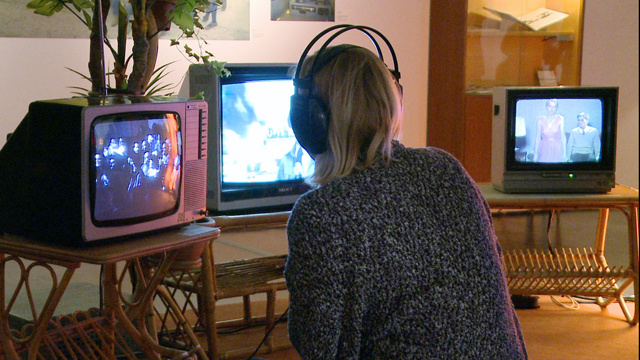
Vidéo Vintage 1963-1983
Further information on the exhibition by Kunst+Film
Category
Related Tags
News Category
- take a look… behind the scenes of ZKM
